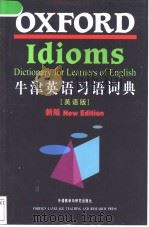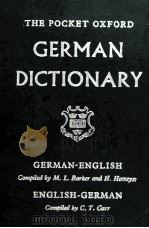《牛津袖珍英语语法》
| 作者 | (英)汤姆森(Thomson,A.J.),(英)马蒂内特(M 编者 |
|---|---|
| 出版 | 西安:陕西师范大学出版社 |
| 参考页数 | 390 |
| 出版时间 | 1992(求助前请核对) 目录预览 |
| ISBN号 | 756130563X — 求助条款 |
| PDF编号 | 85607558(仅供预览,未存储实际文件) |
| 求助格式 | 扫描PDF(若分多册发行,每次仅能受理1册) |
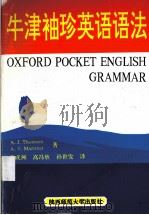
1a/ an, one, the, this, that的用法1
1 a /an (the indefinite article)不定冠词1
2 a/an和one的用法3
3 the (the definite article)定冠词4
4 the with proper names the与专有名词连用5
5 Omission of the the的省略7
6 Omission of the before home, work, bed, etc.the不用于home, work, bed等词前8
7 this /these, that /those (demonstratives)指示词的用途10
2Noun名词11
8 kinds and function名词的种类和作用11
9 Gender名词的性12
10 Regular plural forms规则名词的复数形式13
11 Irregular plural forms不规则名词的复数形式13
12 Plurals ofcompound nouns复合名词的复数形式14
13 Plural or singular?单数还是复数?15
14 Uncountable nouns不可数名词16
15 The possessive case: forms名词所有格:形式18
16 The possessive case: use名词所有格:用法19
17 of+noun for possession of+名词表示所有20
18 Compound nouns复合名词20
3Adjectives形容词22
19 Introduction概述22
20 Adjectives of quality: form and use质量形容词:形式与用法23
21 Adjectives of quality: position质量形容词:位置25
22 Order of adjectives before a noun修饰名词的形容词词序26
23 Comparative and superlative forms形容词比较级和最高级形式27
24 Making comparisons形容词用于比较28
25 Comparisons with than /as and auxiliaries用than /as和助动词进行比较30
26 Adjective+one/ones形容词+one/ones的用法31
27 the+ adjective with a plural meaning具有复数意义的the+形容词结构32
28 Adjectives+infinitives形容词+动词不定式的用法33
29 Adjectives with infinitives or that-clauses形容词与动词不定式或that从句的连用35
30 far and near far和near的用法36
31 little and few little和few的用法38
32 many, much and a lot (of)many, much和a lot (of)的用法39
33 elder and older elder和older的用法40
4Adverbs副词41
34 What are adverbs?副词的意义41
35 Kinds of adverb副词的种类42
36 Adverbs ending in-ly以-ly结尾的副词43
37 Adverbs with the same form as adjectives与形容词同形的副词44
38 Comparative and superlative forms副词比较级和最高级的形式46
39 Adverbs in comparisons用于比较的副词47
40 Position of adverbs in a sentence副词在句中的位置48
41 Adverbs of manner方式副词49
42 Adverbs of place and direction地点副词和方位副词50
43 Adverbs of time时间副词52
44 Order of adverbs of manner, direction, place and time方式、方位、地点和时间副词的语序54
45 Adverbs of frequency频率副词55
46 Adverbs of degree程度副词57
47 Degree: fairly and rather程度副词fairly和rather60
48 Degree: quite程度副词:quite61
49 Degree: hardly, scarcely and barely程度副词hardly, scarcely和barely62
50 far, near, long and much far, near, long和much的用法63
51 Sentence adverbs句子副词65
5neither, all, each, some等代词66
52 neither, either不定代词的用法66
53 all,each,every,everyone,everybody,everything不定代词的用法68
54 each, both, all不定代词的用法68
55 some, any, no, none不定代词的用法71
56 somebody, anybody, nobody, everybody等不定代词的用法73
57 another, other, the other, (the) others不定代词的用法74
6Interrogatives: wh-words and how疑问词how和uwh-词75
58 who, whom, whose, what, which疑问代词的用法75
59 Uses of what what的用法77
60 Interrogative adverbs: how, when, where, why疑问副词:how, when, where, why79
7Possessives, and personal and reflexive pronouns物主代词、人称代词和反身代词81
61 Possessives and personal pronouns: forms物主代词和人称代词:形式81
62 Possessives: use物主形容词和物主代词:用法81
63 Personal pronouns人称代词的用法83
64 Uses of it it的用法84
65 The indefinite pronouns you, one and they不定代词you, one和they87
66 Reflexive and emphasizing pronouns反身代词和强调代词87
8Relative pronouns and clauses关系代词和关系从句89
67 Defining relative clauses限制性关系从句89
68 Defining relative clauses about people关于人物的限制性关系从句90
69 Defining relative clauses about things关于事物的限制性关系从句92
70 Infinitives and participles instead of relative clauses动词不定式和分词代替关系从句94
71 Non-defining relative clauses非限制性关系从句95
72 Non-defining relative clauses about people关于人物的非限制性关系从句96
73 Non-defining relative clauses about things关于事物的非限制性关系从句98
74 Connective relative clauses连接性关系从句99
75 The importance of commas in relative clauses关系从句中逗号的重要性100
9Prepositions介词101
76 Position介词的位置101
77 Prepositions with indirect objects: to and for同间接宾语连用的介词:to和for101
78 Verbs of communication with or without to带有介词to和不带介词to的交际动词103
79 Time: at, on, in表示时间的介词:at, on, in104
80 Time :by, before, after表示时间的介词:by, before, after105
81 Time: from, till/until, to, since, for, during 表示时间的介词:from, till/until, to, since, for, during107
82 Travel and movement:from, to, by, on etc.表示移动和运动的介词:from, to, by, on109
83 Giving directions指出方向111
84 Place: at, in, into, on, onto表示地点的介词:at, in, into, on, onto112
85 Prepositions /adverbs介词/副词113
86 Place: above, over; below, under表示地点的介词:above, over;below, under114
87 Place: beside, between, behind, in front of, opposite表示地点的介词:beside, between, behind, in front of, opposite116
88 Some uses of with with的一些用法117
89 But and except but和except的用法119
90 Prepositions after adjectives and verbs形容词和动词之后的介词119
10Introduction to verbs动词概述121
91 Ordinary verbs and auxiliary verbs普通动词和助动词121
92 Affirmative contractions of auxiliaries助动词的肯定缩略式122
93 Negatives助动词的否定式123
94 Interrogatives: form疑问句:形式125
95 Interrogatives: use疑问句:用法126
96 Negative interrogatives否定疑问句127
97 Modals and semi-modals情态动词和半情态动词128
98 Auxiliaries in short answers etc.简略回答中的情态动词129
99 Short answers简略回答129
100 Agreement and disagreement with statements与陈述一致和不一致的答复130
101 Question tags反意疑问句的附加疑问部分132
102 Additions to remarks附加句133
11动词be134
103 Form动词be的形式134
104 be as an auxiliary verb be用作助动词135
105 be as an ordinary verb be用作普通动词137
12动词have141
106 Form动词have的形式141
107 have as an auxiliary verb have用作助动词142
108 have as an ordinary verb have用作普通动词144
13动词do148
109 Form动词do的形式148
110 do as an auxiliary verb do用作助动词149
111do as an ordinary verb do用作普通动词150
14Permission: can and may 表示许诺的情态动词can和may152
112 Forms情态动词can和may的形式152
113 can or may can与may的辨异153
114 Requests for permission征求允诺154
115 allow allow的用法156
15Possibility: may /might and can /could表示可能性的情态动词:may/might和cna/could157
116 may/might may/might的用法157
117 may/migth+have done等的用法158
118 could instead of may /might用could代替may/might159
119 can的用法160
16Ability: can andbeable表示能力的词:can和be able161
120 Forms can和be able的形式161
121 Use can和be able的用法162
122 could+ have done etc.could+ have done结构的用法163
17Obligation: ought to,shoult, must, have to and need表示义务的情态动词:ought to, should,must,have to和need64
123 ought to and should: form sought to和should:形式164
124 ought to and should: use ought to和should:用法165
125 ought to /should have done etc.ought to /should have done等结构的用法166
126 must: form must:形式167
127 must or ought to /should for obligation must或者ought to /should用来表示义务167
128 haveto:form haveto:形式167
129 must or have to? must与have to辨异168
130 need: forms need:形式170
131 must not and need not must和need的否定式171
132 Absence of obligation无义务的表示方法172
133 need, must and have to in the interrogative need, must和have to用于疑问句173
134 needn't have done结构的用法174
18Deduction and assumption推测和假设175
135 must and can't /couldn't for deduction must和can't /couldn't用来表示推测175
136 will and should for assumption will和should用来表示假设177
19dare and used dare和used的辨异179
137 dare的用法179
138 used to的用法180
139 be used to and to use be used to和to use的辨异182
20The present tenses现在时182
140 Present continuous: form现在进行时:形式182
141 Present continuous:use现在进行时:用法184
142 Verbs we don't normally use in the continuous tenses通常不用于进行时态的动词185
143 Present simple: form一般现在时:形式187
144 Present simple: use一般现在时:用法188
21The past and perfect tenses过去时态和完成时态190
145 Past continuous: form过去进行时:形式190
146 Past continuous: use过去进行时:用法190
147 Past simple: form一般过去时:形式192
148 Past simple: use一般过去时:用法193
149 Present perfect: form现在完成时:形式195
150 Present perfect: use with just for a recently complete action现在完成时与just连用表示最近完成的动作196
151 Present perfect: use for past actions whose time is not definite现在完成时:用来表示发生在过去某个不确定时间的动作196
152 Present perfect: use with this morning etc.现在完成时与this morning等时间状语连用198
153 Present perfect: use with ever, never, always现在完成时:与ever, never, always连用199
154 Present perfect: use for an action which lasts throughout an incomplete period 现在完成时:用来表示一种一直在一个不完整的时间片断延续的动作200
155 Present perfect: use with for and since现在完成时:与for和since连用202
156 Present perfect continuous: form现在完成进行时:形式203
157 Present perfect continuous: use现在完成进行时:用法204
158 Present perfect or present perfect continuous现在完成时与现在完成进行时辨异204
159 Past perfect:form过去完成时:形式206
160 Past perfect: use as a past equivalent of the present perfect过去完成时:作为现在完成时的过去时等式206
161 Past perfect: use as a past equivalent of the past simple过去完成时:作为一般过去时的过去时等式207
162 Past perfect continuous: form and use过去完成进行时:形式和用法208
163 Past perfect or past perfect continuous?过去完成时与过去完成进行时辨异208
22The future将来时209
164 Future forms将来时的形式209
165 Present simple+a time expression一般现在时+时间短语210
166 Present continuous+a time expression现在进行时+时间短语211
167 be going to212
168 be going to for premeditated intention be going to表示事先计划212
169 be going to or will for prediction be going to与will表示预言的辨异213
170 Future simple一般将来时214
171 Future simple:use一般将来时:用法215
172 will for unpremeditated intention will用来表示非事先安排的意图217
173 will or be going to for intention will与be going to表示意图的辨异218
174 will or want /wish /would like will与want/wish/would like的辨异220
175 Future continuous将来进行时220
176 Future perfect将来完成时222
177 Future perfect continuous将来完成进行时223
23would+infinitive would+动词不定式结构224
178 would+present infinitive would+动词不定式原形结构的用法224
179 would for “future in the past”would表示“过去将来时”224
180 would/ would not for past intention would /would not表示过去的意图225
181 would for a past routine would表示过去多次性动作225
182 would+perfect infinitive would+动词不定式完成式的用法226
24Conditional sentences条件句226
183 Introduction条件句概述226
184 Conditional sentences, type 1条件句类型1227
185 Conditional sentences, type 2条件句类型2229
186 Conditional sentences, type 3条件句类型3231
187 Special uses of won't and would in if-clauses if从句中won't和would的特殊用法233
188 Other conditional expressions其他条件表达法233
189 in case and if in case和if的辨异235
25The infinitive动词不定式236
190 Infinitive forms and uses动词不定式的形式与用法236
191 Infinitive as subject of a verb动词不定式作主语237
192 Verbs followed by the infinitive后边可跟动词不定式的动词238
193 Verbs followed by how/what/when etc.and the infinitive后边可跟how/what/when等+动词不定式的动词239
194 Verb (+object)+ infinitive 动词(+宾语)+动词不定式240
195 Verb+object+infinitive 动词+宾语+动词不定式241
196 Infinitive represented by its to 由to代替的动词不定式242
197 too/enough+adjective /adverb+infinitive too /enough +形容词/副词+动词不定式243
198 The continuous and perfect infinitives动词不定式的进行时与完成式245
26The gerund动名词247
199 Form and use动名词的形式与用法247
200 Gerund as a subject of a verb动名词作动词的主语248
201 Gerunds after verbs动词后的动名词248
202 Gerunds after prepositions介词后的动名词250
203 be used to+noun /gerund and used+ full infinitive(=used to)be used to+名词/动名词和used+完整的动词不定式 (=used to)的辨异251
27Gerund or infinitive动名词与动词不定式辨异252
204 Verbs followed by either gerund or infinitive既可跟动名词也可跟动词不定式的动词252
205 Verbs fo llowed by gerund or infinitive without change of meaning后跟动名词或动词不定式都不改变意思的动词253
206 Verbs followed by gerund or infinitive with change of meaning后跟动名词或动词不定式意思发生变化的动词254
28The present participle现在分词257
207 The present participle: form and use现在分词:形式和用法257
208 The present participle or bare infinitive after verbs of sensation感观动词后的现在分词与无to动词不定式辨异258
209 The present participle after certain verbs 某些动词后的现在分词259
210 A participle phrase giving the reason for an action说明行为原因的现在分词短语261
211 A participle phrase instead of a sentence or main clause分词短语代替一个句子或主句262
29The passive被动语态264
212 Active and passive forms主动语态和被动语态的形式264
213 Passive sentences被动句264
214 Infinitive constructions after passive verbs动词被动式后的动词不定式结构267
215 Uses of the passive被动语态的用法268
30The subjunctive虚拟语气269
216 The present subjunctive一般现在虚拟语气269
217 The past subjunctive (unreal past)过去虚拟语气269
31Commands, requests, invitations, advice and suggestions 命令,请求,邀请,劝告,建议271
218 Commands命令271
219 Requests请求272
220 Invitations邀请274
221 Advice劝告275
222 Suggestions建议276
32Verbs of liking and preference表示喜好的动词278
223 care for, like, dislike, love, hate, prefer爱好,喜欢,不喜欢,爱,恨和偏爱的用法278
224 would care for/would care(negative and interrogative),would like/love/hate/prefer would care for /would care(用于否定和疑问式),would like/love/hate/prefer结构的用法279
225 would like and want would like和want的用法辨异279
226 would rather/sooner and prefer would rather/sooner和prefer的用法281
227 wish +subject+would wish+主语+would的用法283
228 wish +infinitive, wish+noun, wish+past tense wish+动词不定式,wish+名词,wish+过去式的用法辨异284
33Reported speech间接引语285
229 Direct and reported speech直接引语和间接引语285
230 Pronouns, adjectives and adverbs间接引语:代词,形容词和副词的变化286
231 Statements: tenses间接引语:叙述中的时态289
232 Subjunctives, modals and conditionals间接引语:虚拟语气、情态动词和条件句291
233 Infinitive and gerund constructions间接引语:动词不定式和动名词结构294
234 Say, tell and other introductory verbs间接引语:say, tell和其他引导性动词295
235 Questions间接引语:疑问句296
236 Questions with shall I/we?间接引语:带有shall I/we?的疑问句297
237 Requests for permission with can /could I?may/might I?间接引语:用can /could I?may/might I?表示对许可的请求298
238 Offers and invitations 间接引语:提供帮助与邀请299
239 Commands, requests and advice间接引语:命令、请求和劝告300
240 Suggestions间接引语:建议302
241 let's in reported speech let't在间接引语中303
242 Exclamations and yes and no 间接引语:感叹句以及yes和no303
243 Reported speech: mixed types间接引语:混合型304
34Linking words连接词306
244 连接词and, but, or, neither…nor, either…o r,both…and306
245连接词besides, however, otherwise, so, therefore,still, yet307
246连接词though /although和in spite of/despite310
247 while, when and as used for time连接词while, when以及as用来表示时间311
248连接词as=when /while和as=because313
35Purpose目的314
249 Infinitives of purpose表示目的的动词不定式314
250 Clauses of purpose and alternative forms目的从句以及选择形式316
36Subordinate clauses从句319
251 What is the subordinate clause?从句的意义319
252 The sequence of tenses insubordinate clauses各类从句时态的一致319
37Clauses of reason, result and time原因,结果和时间状语从句320
253 Clauses of reason introduced by because or as由because或as引导的原因状语从句320
254 Clauses of result introduced by such /so…that由such /so…that引导的结果状语从句321
255 Time clauses时间状语从句323
38Noun clauses名词从句325
256 Noun clauses after ad jectives/participlesand nouns 形容词、分词和名词之后的名词从句325
257 Noun clauses after verbs动词后的名词从句326
258 so and not instead of noun clauses so和not代替名词从句328
39Phrasal verbs短语动词329
259 Forms短语动词的形式329
260 Examples of common phrasalverbs常用短语动词的范例331
40Numbers, dates and measurements数字、日期和度量的表示方法333
261 Cardinal numbers基数词333
262 Ordinalnumbers序数词334
263 Dates日期336
264 Measurements度量337
41Spelling rules拼写规则338
265 Doubling the consonant before a suffix在后缀前双写辅音字母的规则338
266 Omission of a finale before a suffix 在后缀前省略词尾e的规则338
267 Words ending in ce and ge 以ce和ge结尾的词的拼写规则339
268 The suffix ful后缀ful的拼写规则339
269 Words ending in y以y结尾的词的拼写规则340
270 ie and ei ie和ei的拼写规则340
271 Hyphens连词符号的用法340
272 Capitalletters大写字母的用法规则341
273 Abbreviations缩略语的用法规则341
Key to exercises练习答案343
Index索引374
Irregular verbs不规则动词388
1992《牛津袖珍英语语法》由于是年代较久的资料都绝版了,几乎不可能购买到实物。如果大家为了学习确实需要,可向博主求助其电子版PDF文件(由(英)汤姆森(Thomson,A.J.),(英)马蒂内特(M 1992 西安:陕西师范大学出版社 出版的版本) 。对合法合规的求助,我会当即受理并将下载地址发送给你。
高度相关资料
-
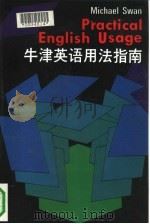
- 牛津英语用法指南
- 1991 牛津大学出版社;外语教学与研究出版社
-

- 牛津实用英语语法 (第四版) 翻译本
- 1998
-

- 新编小学生错别字辨析词典
- 北京:长征出版社
-
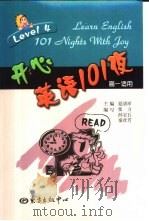
- 牛津英语故事乐园6
- 1998 南京:江苏教育出版社
-
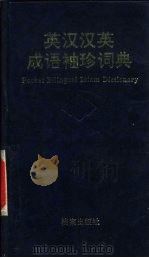
- 英汉汉英成语袖珍词典
- 1993 北京:档案出版社
-
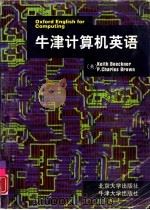
- 牛津计算机英语
- 1996 北京:北京大学出版社;牛津大学出版社
-
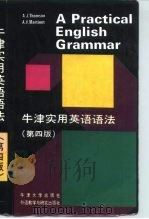
- 牛津实用英语语法 第4版
- 1991 牛津大学出版社;北京:外语教学与研究出版社
-
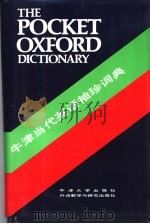
- 牛津当代英语袖珍词典 第7版
- 1988 北京:外语教学与研究出版社
-

- 牛津英语故事乐园 7
- 1998 南京:江苏教育出版社;牛津大学出版社
-

- 牛津英语故事乐园 3
- 1998 南京:江苏教育出版社;牛津大学出版社
-

- 牛津英语故事乐园 8
- 1998 南京:江苏教育出版社;牛津大学出版社
-
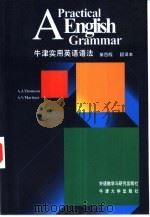
- 牛津实用英语语法 第4版
- 1998 外语教学与研究出版社;牛津大学出版社
-
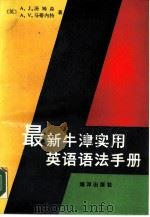
- 最新牛津实用英语语法手册
- 1990 北京:海洋出版社
提示:百度云已更名为百度网盘(百度盘),天翼云盘、微盘下载地址……暂未提供。➥ PDF文字可复制化或转WORD
